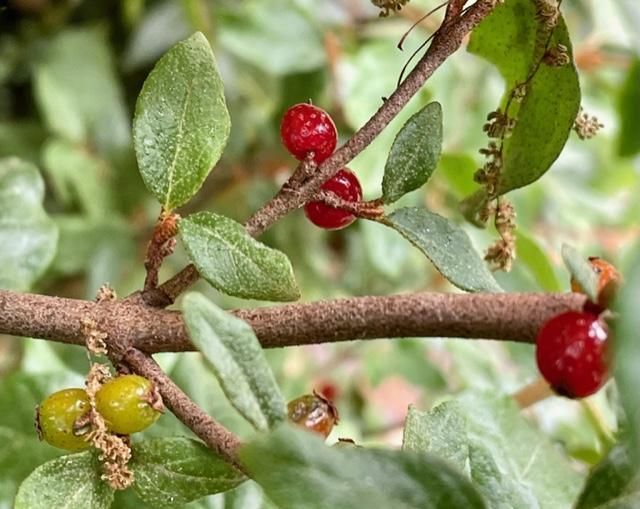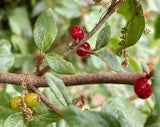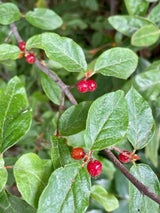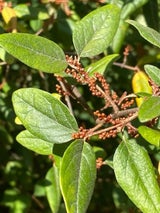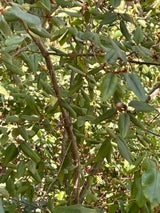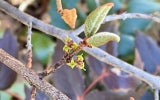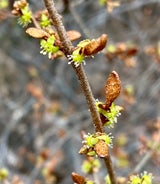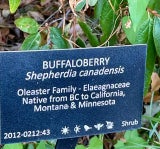- Plant IDs
- >
- ID By Type
- >
- Shrubs
- >
- Shepherdia canadensis
Shepherdia canadensis
Common name: Soapberry, buffaloberry
Shepherdia canadensis is a deciduous medium-sized shrub. Male and female flowers are on separate shrubs (dioecious). It is native to Canada and western and northern United States.
You can walk right by Soapberry and not even notice it - unless you’ve eaten Indian ice cream. Soapberry produces clusters of sour-tasting red or orange berries in summer. These berries contain trace levels of natural detergents known as saponins. When squeezed, the berries produce a sudsy foam. If they are added to water and sweetened, they can be whipped like egg whites to make a frothy, rose-coloured confection. Today in some First Nations, families serve this dish at celebrations. Many call it ‘Indian ice cream’.
According to ethnobotanist Nancy Turner, linguistic studies show that this dish has been around for a long time - 5,000 to 7,000 years. Archeological reports suggest that Indian ice cream dates back even earlier. Soapberry is one of the first plants to follow lichens and mosses in colonizing the moraines left behind by melting glaciers. Studies show that it took root along the northwest coast soon after the great ice sheets melted. This links Soapberry to one of humanity’s great adventures, the southward migration of Paleoamericans along the Pacific coast. Brightly colored red berries may have welcomed them as they explored their new world.
This wide-ranging shrub feeds a lot of wildlife. Thanks to the hover flies pollinating the flowers, there are always lots of berries. These berries, rich in vitamin C and iron, are eaten by grizzly bears, black bears and grouse. Grizzlies eat thousands of soapberries in August and September and manage to leave each shrub intact. They have amazingly agile tongues. And buffalo, bighorn sheep, elk, deer, and snowshoe hare browse on its leaves.
Text and photos by Hughie Jones
The buffaloberry bush in the photos is planted close to the restaurant behind the bike racks (bed 43). It seems to be just one bush. But if you look into the plant, you will see another one growing very close to it. One plant only would mean no berries.
The berry pictures were taken in early June, and the female flower and male flower ones in spring. The female flowers are hard to see on this plant - quite a bit smaller and not as showy as the males. The other pictures were taken in September.
